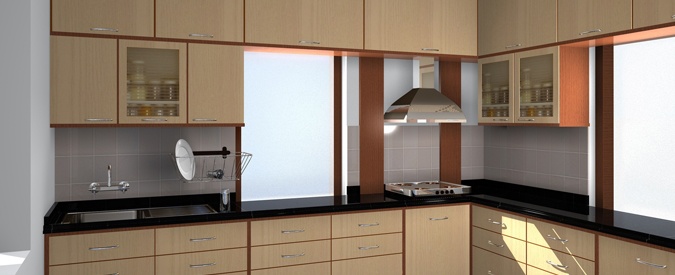Last Updated: February 14, 2023
Compare Particle Board vs Plywood Cabinets Costs
Find a Kitchen Cabinet Pro
Fill out our 30 second free form to receive competitive pricing from pre-screened cabinet installation companies. No commitments. Our service is always free!
Particle Board Cabinets
Constructing cabinets entirely of hardwood is cost prohibitive. That’s why cabinet manufacturers use less expensive materials to build the cabinet box - the part you don’t see when the doors and drawers are closed.
One of those materials is particle board, which is made from wood chips or shavings that have been compressed together with glue. Particle board has developed a bad name that is somewhat unfair. As long as your cabinets are constructed from high-quality particle board, they can be sturdy and durable, not to mention economical.
How Much Do Particle Board Cabinets Cost?
Because particle board is made with scrap materials, it costs significantly less than plywood. The cost savings is generally 10 to 20 percent for mid-grade cabinets (most high-end cabinets use plywood, not particle board).
Cabinets for an average kitchen range from $5,000 to $15,000. Say you purchase a $7,000 set with particle board; the same set with plywood might cost $7,700 to $8,400. However, keep in mind that these prices are just general guidelines.
Particle Board Cabinets Pros
- Cheaper - Particle board is less expensive, partially because of the reputation it has developed. However, it is actually a denser material than plywood. High-quality particle board is strong and stable.
- Uniform texture - Particle board is precisely machined to create a consistent, uniform texture without gaps or holes. This precision makes it easier to install without flaws.

Particle Board Cabinets Cons
- Strength - Even high-quality particle board isn’t as strong as plywood. You might need extra supports if you’re installing a heavy countertop over particle board cabinets. Particle board also scratches and dents more easily.
- Moisture damage - Particle board is not as water resistant as plywood, so it is more susceptible to moisture damage. Of course, neither is waterproof. Any major leakage or flooding can ruin both particle board and plywood.
Find a Kitchen Cabinet Pro
Fill out our 30 second free form to receive competitive pricing from pre-screened cabinet installation companies. No commitments. Our service is always free!
Plywood Cabinets
Plywood is used more often than particle board for cabinet boxes and has long been considered the better choice for its strength. Just like particle board, however, the material has its pros and cons.
Plywood is made from multiple layers of wood veneer. The layers are built with the grain running in alternating patterns for added strength. Plywood is sold in different thicknesses. Expensive cabinets will use 3/4-inch plywood while less expensive models will use 1/2-inch plywood.
How Much Do Plywood Cabinets Cost?
Plywood costs between 10 and 20 percent more than particle board. A $10,000 set of cabinets with particle board might cost $11,000 to $12,000 with plywood. Not surprisingly, 3/4-inch plywood costs more than 1/2-inch plywood. However, the difference is usually only about $10 per sheet.
Some cabinet makers offer a combination of particle board and plywood. You can upgrade to plywood for the sink base, where moisture is a problem, but use particle board everywhere else. That minimizes the cost difference.
Plywood Cabinets Pros
- Strength - Plywood is a stronger material that can hold greater weight, mostly because of the interweaving design of the boards. It is also more resistant to moisture, scratching and denting.
- Look - Many people like the look of plywood better than particle board, although some people aren’t concerned at all with the way the inside of their cabinets look. Particle board also has a better color.
- Easier to repair - Plywood can be patched and repaired more easily. And it is better able to withstand drilling.
Plywood Cabinets Cons
- Variability - Plywood isn’t as consistent throughout. There may be gaps or holes where the boards were combined. This can make it more difficult to install because the cabinets won’t line up as perfectly.
- Cost - Again, plywood tends to be more expensive.
Find the Best Cabinetry Pros Who Will Compete for Your Business
Find a Kitchen Cabinet Pro
Fill out our 30 second free form to receive competitive pricing from pre-screened cabinet installation companies. No commitments. Our service is always free!
Find a Kitchen Cabinet Pro
Fill out our 30 second free form to receive competitive pricing from pre-screened cabinet installation companies. No commitments. Our service is always free!